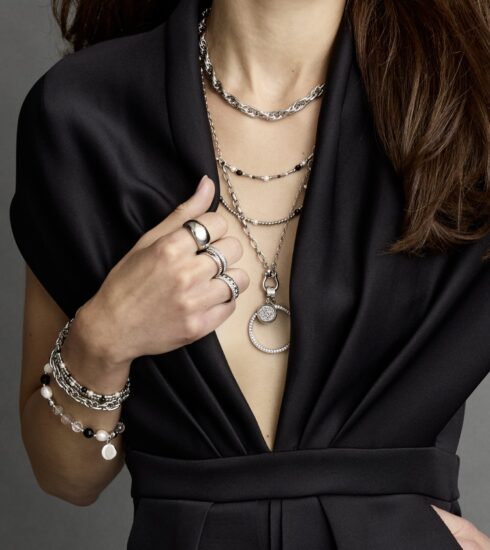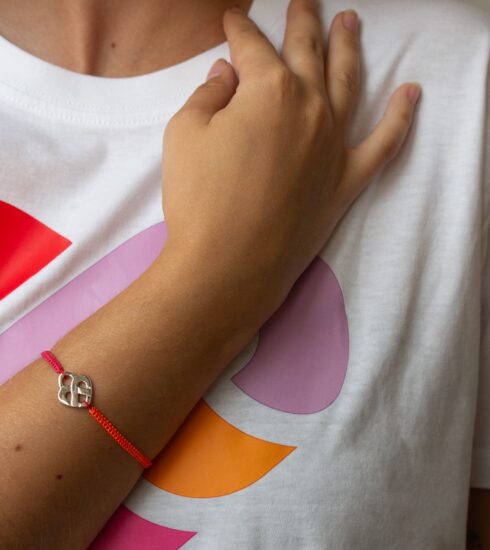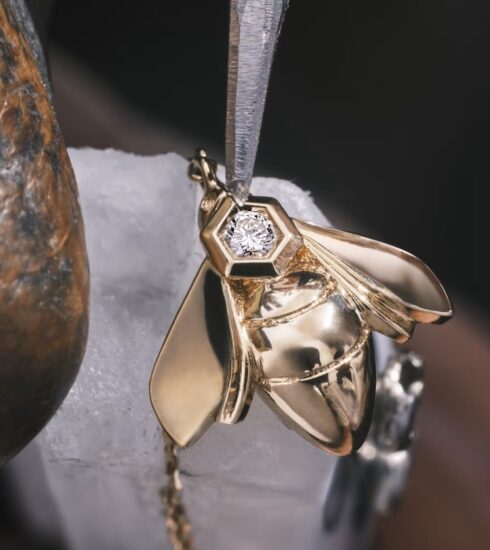"Mediterranean Blue": Exclusive diamond to be auctioned at Sotheby's
"Mediterranean Blue": Exclusive diamond to be auctioned at Sotheby's
The "Mediterranean Blue" is a natural diamond in the shade Fancy Vivid Blue. The 10-carat cushion-cut diamond will go under the hammer at Sotheby's in May. Experts expect the diamond to fetch $20 million at auction. We'll explain in a short excursus what makes the diamond so special.
Left: The “Mediterranean Blue” on its GIA certificate. © Sotheby's
A gemstone goes on a journey
On May 13, the renowned auction house Sotheby's will host a live auction in Geneva dedicated to exceptional gemstones and diamonds. The star of the event is the "Mediterranean Blue," a diamond in the shade "Fancy Vivid Blue" discovered only in 2024 and named after the azure waters of the Mediterranean. It was found in South Africa. The uncut diamond had an impressive size of 31.93 carats when it was discovered. After being cut into its cushion shape, it now weighs 10.03 carats. It was set in its enhanced form on a size 53 ring band.
Before the diamond is auctioned, it will be given one last tour of some of the world's hotspots. The "Mediterranean Blue" journey begins on April 8 in Abu Dhabi. It will then continue to Taipei, from there to Hong Kong, and finally to New York, before returning to Geneva on May 9, just in time for its auction. The exhibition in Geneva will take place from May 9 to 12 at the Mandarin Oriental Hotel.
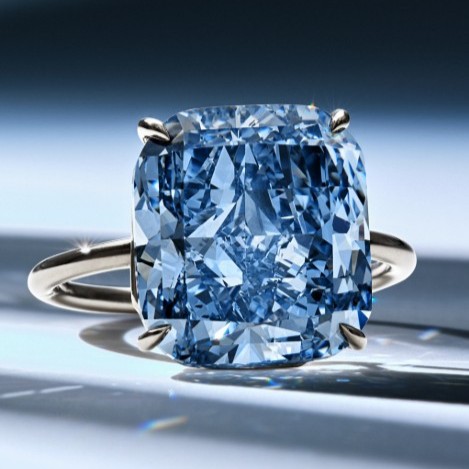
The Mediterranean Blue
- Color: Fancy Vivid Blue
- Clarity: VS2
- Cut: Cushion Modified Brilliant
- Location: South Africa
- Gross weight: 31.93 carats
- Ground: 10.03
- Dimensions: 13.07 x 11.78 x 7.18 mm
Blue diamond: rare and sought-after
Natural diamonds remain highly sought-after – colored diamonds are the most sought-after due to their rarity. The "Mediterranean Blue," with its 10.03 carats and intense blue color, is a very special example.
The renowned auction house Sotheby's once again highlights its value in a comprehensive report: Only 0.3 percent of all diamonds exhibit a bluish hue. And only a very small fraction of these can be described as "Fancy Vivid Blue" – the hue with which "Mediterranean Blue" enchants its viewers.
The Gemological Institute of America (GIA) examined 462 blue diamonds and categorized only 1 percent of this amount as “Fancy Vivid Blue.”
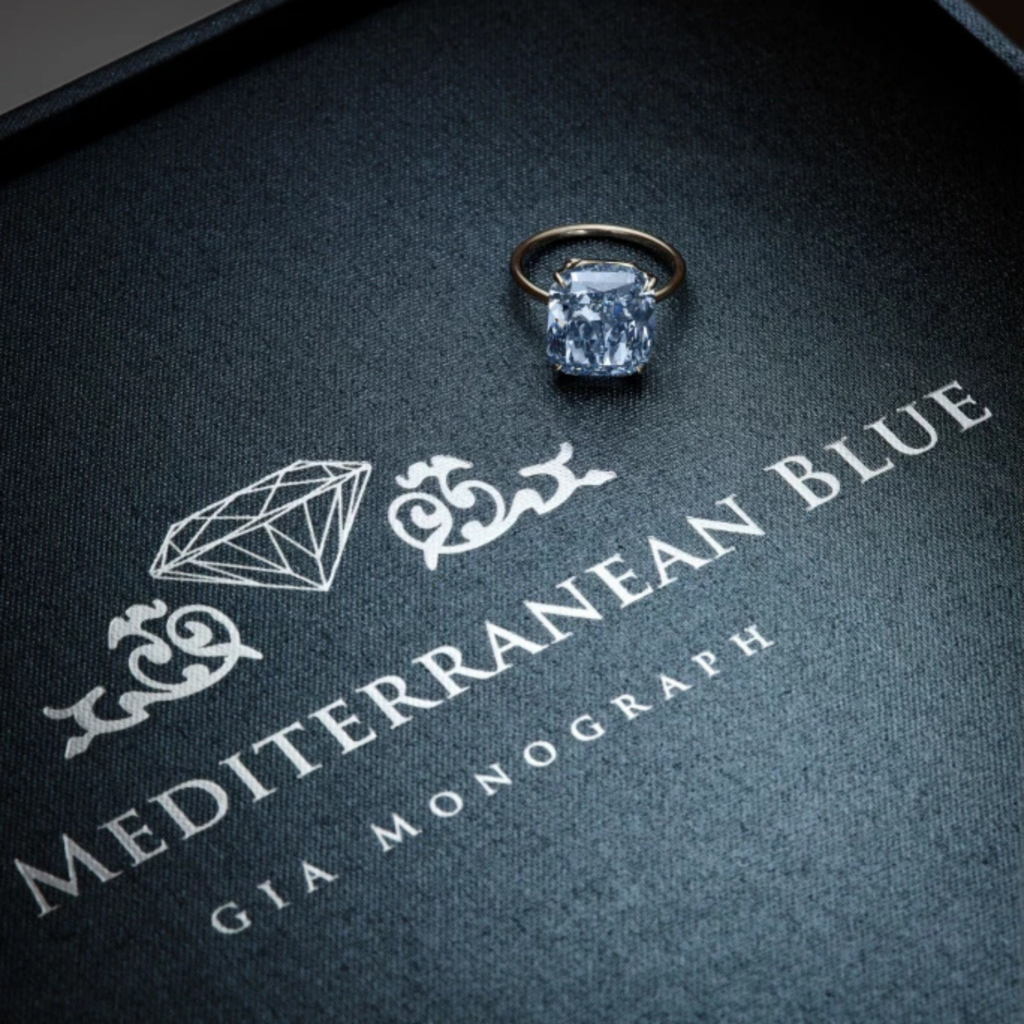
What makes Mediterranean Blue so blue?
Mediterranean Blue gets its intense blue color from traces of boron. The GIA Institute has determined that diamonds with these shades of blue are formed far deeper in the earth than any other type of diamond.
We now know that diamond formation began about 3.5 billion years ago, and that they had to remain dormant in the Earth for many millions of years before becoming as sought-after a commodity as they are today. Only recent geological events brought these diamond deposits closer to the Earth's surface, giving humans the opportunity to discover them.
The boron that gives diamonds their color has been extracted from rock layers over the course of Earth's history and can also be detected in seawater. Scientific research suggests that boron may have been deposited as sediment in the oceans and transported from there to the Earth's core. Deeper in the Earth's core, the deposits break up again, releasing a boron-enriched fluid that contributes to the formation of diamonds.
In short, the very complex geological events that make diamonds – and especially blue diamonds – so special put seawater and blue diamonds in direct contact – which makes the name “Mediterranean Blue” all the more fitting.

The finishing touches for the blue beauty
The process of transforming the "Mediterranean Blue" from its natural shape to its brilliant cushion cut took six months. The process for cutting a blue diamond differs from that for colorless diamonds, as blue diamonds often have irregular and asymmetrical crystal structures. The blue color can also be unevenly distributed throughout the crystal structure.
Only true experts can reveal a diamond's full potential after a long and careful examination, which is why cuts are sometimes modified by master cutters. However, the profession of diamond cutter is becoming increasingly rare, which also contributes to the exclusivity of high-quality diamonds.
The cushion cut chosen for the “Mediterranean Blue” is deliberately intended to be reminiscent of historically relevant and famous unique diamonds such as the “Regent” and “Cullinan II”.
The Regent Diamond, located in the Louvre, weighs 140.64 carats and is colorless with a bluish shimmer. Its value is estimated at approximately 55 million euros. The Cullinan II Diamond, part of the British Crown Jewels, is also colorless and weighs 317.4 carats. Its value is estimated at 180 to 320 million euros.
The “Blue Mediterranean” is expected to fetch a price of 20 million euros at the Sotheby's auction.
More details about Mediterranean Blue can be found at www.sothebys.com




